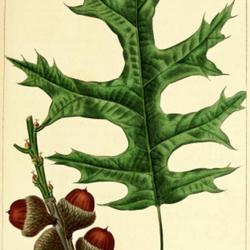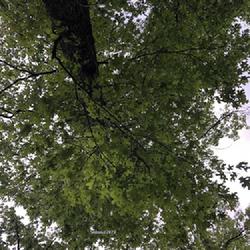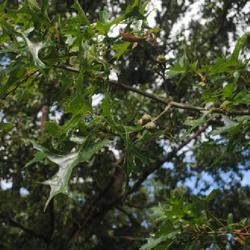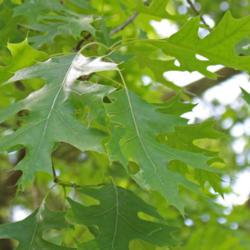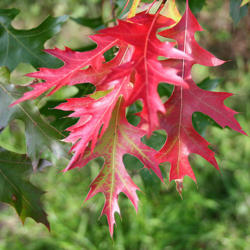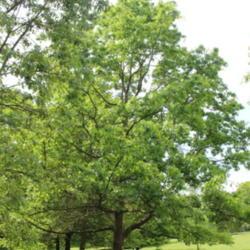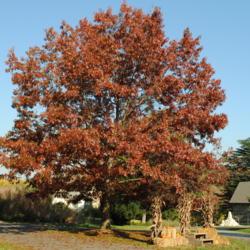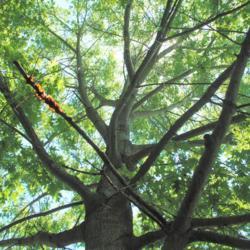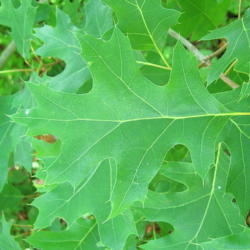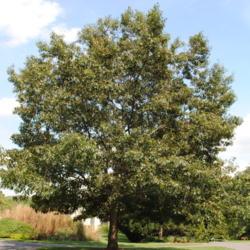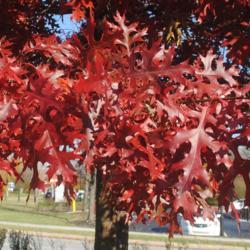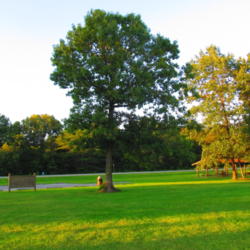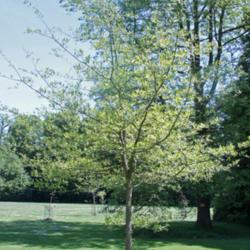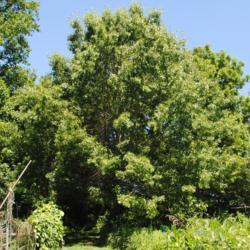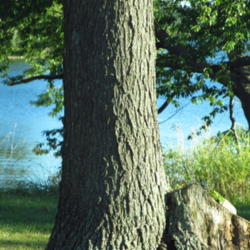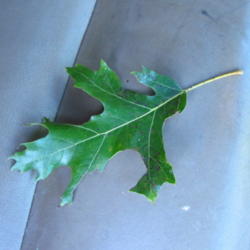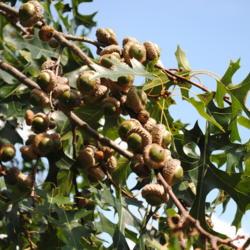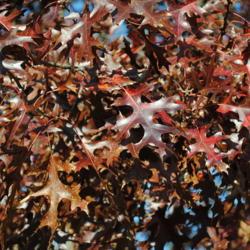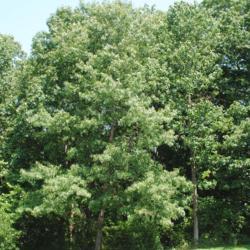Posted by
ILPARW (southeast Pennsylvania - Zone 6b) on Dec 9, 2017 1:38 PM concerning plant:
I believe that this species gets its name from its good scarlet or red fall color. It grows in well-drained or dry soils in uplands, hills, and mountains from southern New England & parts of New York down to northern Georgia & Alabama & Mississippi to southeast Missouri of the Ozarks, far southern Illinois & Indiana, an area in northwest Indiana, southeast Michigan, and much of Ohio & PA. It needs an acid soil, but the pH is good up to 6.8, probably even to 7.0. It grows from 1 to 2 feet/year and lives about 200 to 300 years. Its appearance is very similar to the Pin Oak that grows mostly in bottomlands and swamps. The Scarlet Oak has leaves to 6 inches x 4.5 inches that have deep, circular, even sinuses (rather C-shaped) and usually 7 lobes, to 9 possible. (Pin Oak's leaves are usually 5 lobed, 7 lobed possible, with uneven U-shaped sinuses.) The oval acorns of Scarlet Oak get to 1 inch long and have deep, bowl-like scaly cups. I see some wild Scarlet Oaks every so often on the forested hills of PA and I have seen some trees, still young, planted in some parks, public landscapes, and even at shopping centers. This species develops a deep taproot with some shallow coarse lateral roots, but it can be dug up and balled & burlapped in early spring, at least up to a tree around 2 inches in caliber. Some large, diverse nurseries, native plant nurseries, and specialty nurseries sell this species. Usually when sold at native plant or specialty nurseries, they are raised in big pots in container culture. It is a wonderful, high quality shade tree that should be used more.


